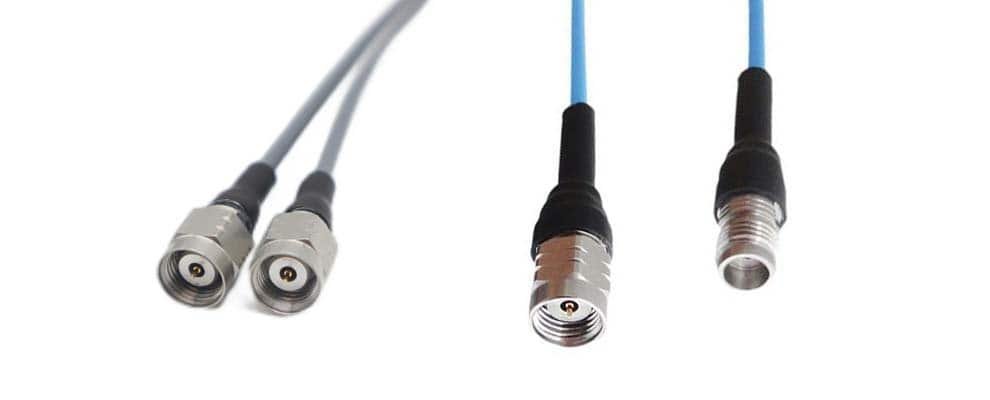1.85 mm Cable Connectors | Reliable Performance for Telecom Industry

25
Sep
 Coaxial Cable Assembly
Coaxial Cable Assembly
 Microwave Test Cable
Microwave Test Cable
 Coaxial RF Connector
Coaxial RF Connector
 Coaxial RF Adapter
Coaxial RF Adapter
 Coaxial RF Termination
Coaxial RF Termination
 Coaxial RF Test Probe
Coaxial RF Test Probe
 Coaxial RF Attenuator
Coaxial RF Attenuator
 RF Switches
RF Switches
 Coaxial RF Power Dividers
Coaxial RF Power Dividers
In the fast-evolving telecom sector, 1.85 mm cable connectors stand out for their high-frequency capabilities and precision. These connectors, often paired with 1.85 mm RF cables, ensure seamless signal transmission in demanding applications like 5G networks. At ZOMWAVE, we specialize in custom 1.85 mm cable assemblies that deliver reliable performance, reducing downtime and enhancing connectivity. This article explores the benefits, applications, and real-world uses of 1.85 mm cables, including variants like 1.85 mm to 2.92 mm cable options.
The 1.85 mm cable is a precision coaxial solution designed for microwave frequencies up to 67 GHz. Unlike larger connectors, the 1.85 mm connector offers low insertion loss and excellent VSWR, making it ideal for high-speed data transfer. At ZOMWAVE, our 1.85 mm cable assemblies are crafted with brass or stainless steel bodies and gold-over-nickel plating for durability.
1.85 mm RF cables provide superior shielding against interference, supporting applications in test equipment and base stations. They feature tight tolerances of ±0.005 mm, ensuring consistent mating. For instance, our 1.85 mm cable assembly options include flexible and semi-rigid variants, compliant with RoHS and REACH standards.
Compared to 2.4 mm or 2.92 mm types, the 1.85 mm cable excels in ultra-high-frequency environments. A study on precision coaxial connectors from IEEE [1] highlights how 1.85 mm designs maintain signal integrity at 60 GHz, with drawings showing optimized pin and dielectric structures for telecom use.
1.85 mm cables are pivotal in modern telecom infrastructure, from 5G/6G deployments to IoT networks. ZOMWAVE’s 1.85 mm cable assemblies support digital transmission, offering low passive intermodulation for clear signals.
In 5G setups, 1.85 mm to 2.92 mm cable adapters enable backward compatibility while handling millimeter-wave frequencies. According to Wikipedia’s list of RF connector types [2], 1.85 mm connectors are part of NMD series, used in network measurements for reliable telecom testing.
A telecom provider in a major city upgraded their base stations using ZOMWAVE’s 1.85 mm cable assemblies. Previously facing 15% signal loss due to interference, they achieved a 40% improvement in throughput after integration. This involved custom 1.85 mm RF cables routed through dense urban environments, with testing showing VSWR below 1.2:1 up to 50 GHz. Steps included: 1) Assessing site frequency needs; 2) Selecting 1.85 mm connector variants; 3) Assembling with precision CNC machining; 4) On-site validation using vector network analyzers.
1.85 mm cables shine in lab settings for telecom R&D. Our microwave test cables, compatible with 1.85 mm connectors, reduce operating costs by minimizing downtime.
An IoT manufacturer partnered with ZOMWAVE to test high-frequency modules. Using 1.85 mm cable assemblies, they simulated real-world conditions, resulting in a 25% faster testing cycle. Data from NIST’s research on millimeter-wave measurements indicates that 1.85 mm setups achieve phase stability within 0.5 degrees, crucial for telecom accuracy. The process: 1) Define test parameters; 2) Connect via 1.85 mm to 2.92 mm cable; 3) Run simulations; 4) Analyze results for optimizations.
Beyond ground networks, 1.85 mm cables support satellite communications in telecom hybrids.
A defense contractor utilized ZOMWAVE’s 1.85 mm RF cables for a ground station project, handling 60 GHz links. This led to a 30% reduction in latency, with assemblies enduring 10,000 mating cycles. As noted in a PMC study on dual-band 5G antennas [3], 1.85 mm end-launch connectors were key for VNA connections, ensuring precise measurements in telecom applications.
Choosing the right 1.85 mm cable involves evaluating frequency, power handling, and environment. ZOMWAVE offers end-to-end support, from design to ISO9001-certified production.
A report from GSMA on 5G spectrum[4] emphasizes that high-frequency connectors like 1.85 mm reduce deployment costs by 20% through efficient signal paths.
1.85 mm cable connectors and assemblies from ZOMWAVE provide unmatched reliability for the telecom industry, supporting next-gen networks with precision and durability. Whether you’re building 5G infrastructure or testing IoT devices, our 1.85 mm RF cables deliver performance you can trust. Contact us at zomwave.com for custom quotes and expert advice to elevate your projects.
 Coaxial Cable Assembly
Coaxial Cable Assembly
 Microwave Test Cable
Microwave Test Cable
 Coaxial RF Connector
Coaxial RF Connector
 Coaxial RF Adapter
Coaxial RF Adapter
 Coaxial RF Termination
Coaxial RF Termination
 Coaxial RF Test Probe
Coaxial RF Test Probe
 Coaxial RF Attenuator
Coaxial RF Attenuator
 RF Switches
RF Switches
 Coaxial RF Power Dividers
Coaxial RF Power Dividers Coaxial Cable Assembly
Coaxial Cable Assembly
 Microwave Test Cable
Microwave Test Cable
 Coaxial RF Connector
Coaxial RF Connector
 Coaxial RF Adapter
Coaxial RF Adapter
 Coaxial RF Termination
Coaxial RF Termination
 Coaxial RF Test Probe
Coaxial RF Test Probe
 Coaxial RF Attenuator
Coaxial RF Attenuator
 RF Switches
RF Switches
 Coaxial RF Power Dividers
Coaxial RF Power DividersNo account yet?
Create an Account